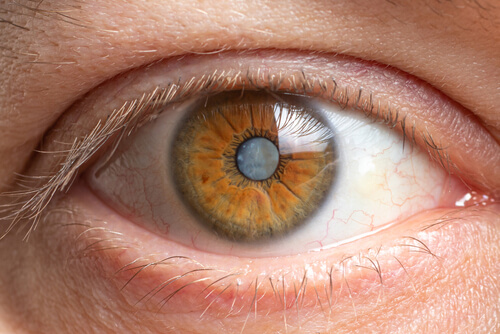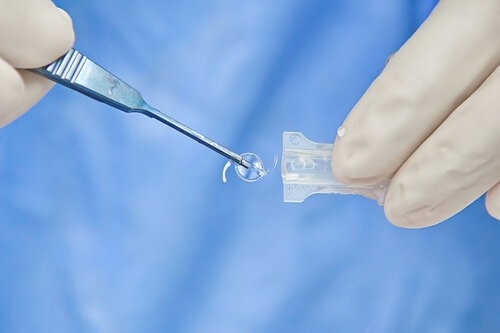How Do I Know When My Cataracts Need to Be Removed?
Cataracts are an inevitable part of aging. Everyone will experience them at some point in their life.
As cataracts develop, vision gradually becomes worse. Eventually, cataracts can lead to complete vision loss.
However, cataract surgery is a safe and effective procedure that can restore your vision and even allow you to experience less dependence on visual aids. Keep reading to learn how to know when your cataracts need to be removed!
What Are Cataracts?
Cataracts are a clouding of the lens of the eye. Normally, the lens is a transparent piece of tissue that rests behind the iris inside the eye. 
As light passes through it, it shifts and adjusts to refocus light. There are proteins inside a healthy lens, but these proteins are arranged in a specific way.
Eventually, these proteins begin to break down and clump together, causing a clouding of the lens. At first, cataracts have no noticeable effects on your vision.
The clumps of protein are small enough that light passes over them with no issue. As the clumps of protein grow, they also become darker and change in color.
Eventually, they will begin to block out light and distort your vision.
Do you think it may be time for you to have cataract surgery?
Schedule a cataract evaluation today
What Other Symptoms Of Cataracts Are There?
Cataracts affect your vision in more ways than one. In addition to darkening your eyesight, they can do the following.
Cataracts Can Cause Glare
Cataracts may cause the light that enters your eye to scatter. Instead of being focused directly, the light bounces inside your eye.
Cataracts Make Night Vision Worse

The effects of cataracts are stronger at night when there is less light available. You’ll likely notice this when trying to drive, as well as glare from oncoming traffic.
Cataracts Can Make Halos Around Lights
You may also notice rings forming around the headlights of oncoming traffic. Cataracts can cause strange visual aberrations in your vision.
Cataracts Can Cause Colors to Fade
As cataracts develop, they begin to change color. You may notice your vision starting to become more brown or yellow, like a filter is being placed in front of your eyes.
Reduced contrast makes the world around you seem dull and muddy.
Cataracts Can Cause Double Vision in One Eye
Cataracts can cause the shape of your lens to change. This can interfere with clarity even before the cataract darkens.
You may see multiple images in one of your eyes temporarily as the cataract develops.
Do you think you may be experiencing symptoms of cataracts?
TAKE THE FREE CATARACT SELF-TEST
Do I Need Surgery For My Cataracts?
The only way to restore vision affected by cataracts is to have them removed during cataract surgery. Cataract surgery is very safe.
Cataract surgery has been performed for many years, and modern medicine is constantly improving the practice. In fact, cataract surgery is considered to be one of the safest surgeries in the world.
Cataract surgery is also one of the most common procedures performed in the world. The risk of complications still exists, but it is incredibly low.
Recovery from cataract surgery is also fast and easy to get through.
What Happens During Cataract Surgery?
Cataracts are a part of the natural lens of the eye. Because of this, cataracts cannot be separated from the lens.

Instead, the goal of cataract surgery is to remove the natural lens and replace it. The device that replaces your natural lens is called an intraocular lens or IOL.
IOLs are made of a strong and flexible material so that it can last the rest of your life. The IOL is inserted into the same place as your natural lens after the natural lens has been removed.
To remove the natural lens, your cataract surgeon first has to open the cornea. The incision in the cornea is extremely small.
This allows your eye doctor to close the opening with the same tissue, which reattaches to itself quickly. Once the cornea is opened, then your cataract surgeon uses a special instrument to break apart the natural lens inside the eye.
The pieces can then fit through the pupil and the opening with gentle suction. After the IOL is inserted, the cornea is closed, and no stitches are required.
What IOL Should I Choose?
There is no one-size-fits-all IOL. What's right for one person may not be right for another.
You can customize your vision with your IOL selection based on your needs and preferences. Monofocal IOLs are the most basic options available.
While they are more cost-effective than premium IOLs, they only provide a fixed focus, either close up or at a distance. Premium IOLs can correct vision at near, far, and even intermediate ranges.
They allow you to switch between focuses with ease, and may even make your eyesight better than it's ever been.
Center for Total Eye Care offers a wide array of premium IOL choices from trusted brands. Your eye doctor will help you determine which is best for you when it's time for cataract surgery.
Are you experiencing symptoms of cataracts? Schedule a cataract evaluation at Center For Total Eye Care in Westminster or Eldersburg, MD, today!



